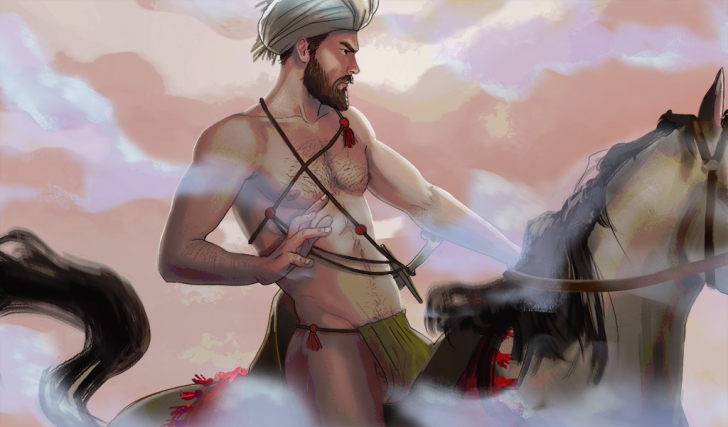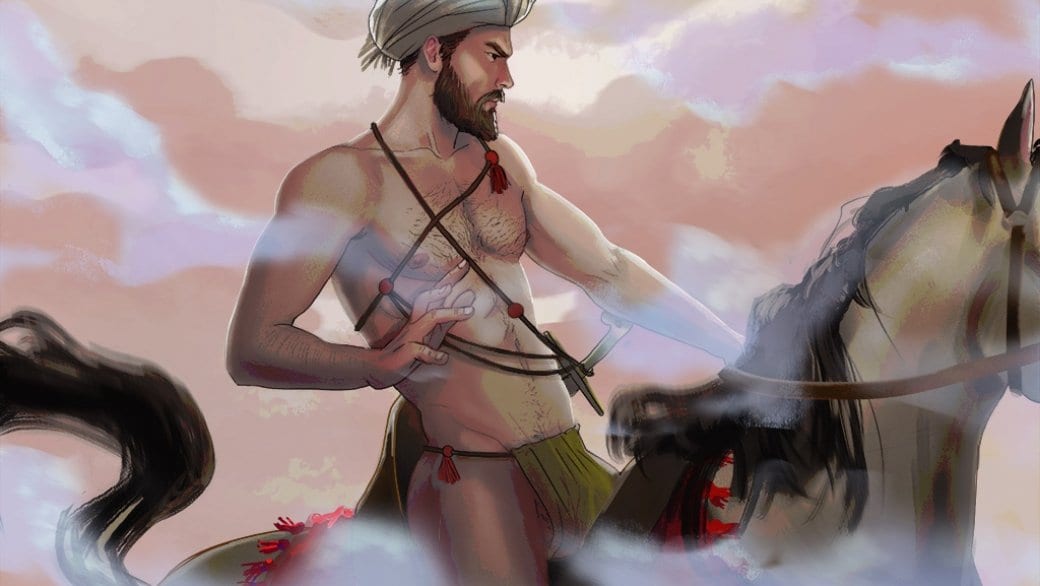Imagine a male-only military caste of beautiful, buff, combat-ready slaves, begotten specifically to rule an empire, and given to homosexual inclinations. Sounds like something out of a dystopian erotic thriller but, growing out of the Abbasid Caliphate in ninth-century Iraq, this is actually exactly what the Mamluks were.
At a time when the caliphate was falling apart due to fracturing and infighting among emirs and governors, Caliph al-Ma’mun established an army made up of slaves. Bought from childhood or adolescence and given a rigorous military training, the Mamluks were believed to have no connections outside of the empire, especially since their garrisons associated solely with themselves and the ruling elite. A series of Mamluk victories along with increasing infighting amongst Abbasid and Ayyubid dynasty rulers and heirs made the Mamluk a lasting military and political force in what is now Egypt and Syria.
The Mamluk were made up almost entirely of slaves from children of poor families, or those kidnapped by slavers. The boys typically came from the Caucasus Mountains of Georgia or Circassia regions — the latter a region of modern day south-western Russia. Mamluk means “one owned” or “white slave” in Arabic vernacular where the tradition started, although they were technically free after achieving status as fully trained adults. The Mamluk hierarchy was a strong meritocracy, and is especially amazing because a former slave could aspire to significant power, even up to the sultanate, depending on the historical period. Sons of Mamluks could not become one, and once a Mamluk died, his property and progeny became that of the Mamluk. This meant that, even though a Mamluk was technically freed once gaining the rank of soldier, power and property could not be passed down, so bothersome dynasties weren’t a problem.

In an Islamic world given strongly to homosexual predilections, Mamluks were revered as much for their aesthetic and erotic potential as their military prowess. Historian Everett K Rowson outlines the multitude of ways the foreign slaves were coveted for their beauty. Rowson shares a couple of poems from the (male) Arabic upper class:
Look there and you will see one with an innocent gaze,
Ruby-lipped, hazing with an eye adorned by kohl,
A son of the Turks, whose languid glances are arrows
Shot from his eyelashes at every noble man.
Another poem commands Arab maidens to get away, “For I have hitched my fate to a Turkish city boy,” and that he favours this boy’s “narrow glance” over the Arabic women’s “wide eyes.”
Aside from plenty of evidence of Islamic societies taste for Caucasian boy-flesh, historian James Neill writes that Mamluks often fancied one another, since “scholars take it as a given that pederastic relationships between the slave-cadets and adult Mamluk warriors was common practice.” The Mamluk world was a homosocial one; even after they married, Mamluk soldiers continued to live with the others. Illustrating the sins the boys got up to in the barracks, one story explains how a eunuch officer overseeing young Mamluks was informed that when one of his charges was performing the major ablution, cleansing himself of his sins, the eunuch would send someone to inspect the boy’s underwear, looking for nocturnal emission — the lack of which meant there’d be hell to pay.
A moral tract on the profession of looking after Mamluks, by 14th-century Shafi’i jurist al-Din al-Subki, explains that “being charged with supervision of beardless boys, he is not permitted to engage in sexual immorality with them, nor should he allow two of them to sleep together in a single bed; but these officials have now become notorious for pimping their charges.”
Al-Subki also described how the Mamluks’ valets were just as guilty, working out “new fashions in clothing designed to stimulate lust; they outdo women in adorning themselves and seduce people with their loveliness.”
The desirability of the Mamluk meant that Islamic preachers could blame homosexuality as a corrupting force of foreign influence — an excuse we see time and time again throughout history. This attitude toward the Mamluk didn’t stop them from being a major power. They defeated the last of the Crusaders in the Holy Land, recaptured Cyprus from the invading Christians and ruled the Middle East well into the 15th century. Rowson calls the bonds between Mamluk “homoerotic,” while Neill numbers them among the world’s “ambisexual traditions,” but whatever the case may be, here’s hoping someone’s written that juicy, dystopian erotic thriller; something set in the future that’s light on the pederasty but strong on aliens and lasers.
History Boys appears on Daily Xtra on the first and third Tuesday of every month. You can also follow them on Facebook.


 Why you can trust Xtra
Why you can trust Xtra


